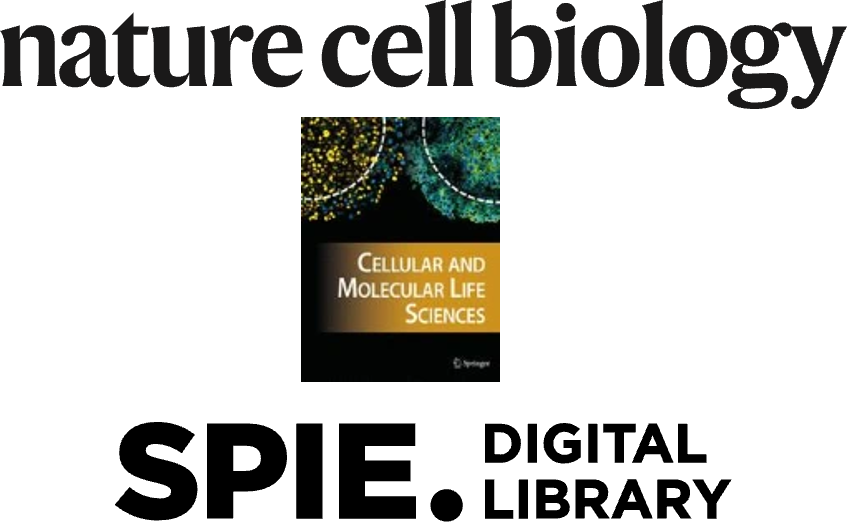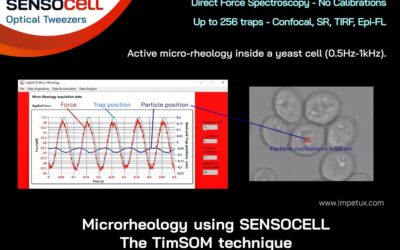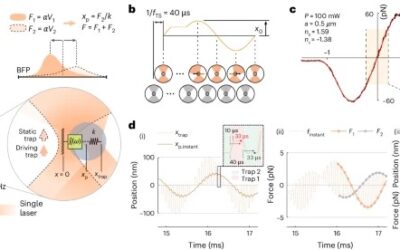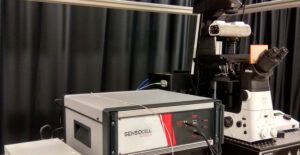In the ever-evolving realm of biophysics and cellular mechanics, three recent publications have shed new light on the intricate processes that govern cellular behavior and mechanotransduction, with the aid of SENSOCELL optical tweezers from IMPETUX. From liquid-to-solid phase transitions in neuronal condensates to the impact of mechanical stress on nuclear modifications and the development of innovative optical tweezers for active microrheology, these studies offer exciting insights into the world of cell biology.
A Transition in Neuronal Mechanotransduction:
A groundbreaking study titled “A MEC-2/stomatin condensate liquid-to-solid phase transition controls neuronal mechanotransduction during touch sensing” and published in Nature Cell Biology, has illuminated the dynamic nature of biomolecular condensates. Utilizing SENSOCELL optical tweezers from IMPETUX, the research conducted using Caenorhabditis elegans as a model reveals that MEC-2/stomatin condensates switch between a
fluid-like and a solid-like state, facilitating transport and mechanotransduction. This transformation is initiated by the interaction between the SH3 domain of UNC-89 (titin/obscurin) and MEC-2. This discovery implies a crucial role for these condensates in frequency-dependent force transmission in mechanosensitive neurons during body wall touch, expanding our understanding of their biological significance.
Mechanical Stress and Nuclear Alterations in Leukemia Cells:
The publication titled “Mechanical stress confers nuclear and functional changes in derived leukemia cells from persistent confined migration” delves into the effects of mechanical stress on cellular migration. The study reveals that persistent migration through physical barriers, leads to permanent modifications in migratory-altered cells. These changes encompass alterations in lamin B1 localization, cell morphology, and transcription. Additionally, migratory-altered cells exhibit functional differences in DNA repair, response to chemotherapy, and cell migration. The research suggests that mechanical compression during persistent cell migration contributes to stable nuclear and genomic alterations, potentially playing a role in aging diseases and cancer.
Innovative Optical Tweezers for Cellular Microrheology:
The third study, “Time-shared optical tweezers for active microrheology inside cells,” introduces a novel technique for studying cellular mechanics using again our SENSOCELL system. Traditional methods rely on multiple laser beams to trap and measure displacements and forces, making the setup complex. This new method offers a solution by employing a single trapping beam through the time-sharing mode of an optical micromanipulation unit modulated with acousto-optic deflectors, showcasing the versatility and efficiency of SENSOCELL in cellular microrheology studies.
These recent publications and its results obtained with the cutting-edge SENSOCELL optical tweezers by IMPETUX, mark significant advancements in the understanding of cellular mechanics, with implications for fields ranging from neurobiology to cancer research. As scientists continue to unravel the mysteries of these complex processes, the future holds great promise for the development of innovative DIAGNOSIS PROCEDURES in various medical domains.
You can have a look at more interesting publications related with our technology at the Scientific Publications section in our website.





